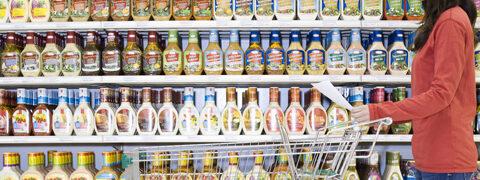
Recently the Food Marketing Institute (FMI) held its annual Midwinter Executive Conference in Scottsdale, Arizona. FMI serves as the voice of the food retail industry and their members operate nearly 40,000 retail food stores and 25,000 pharmacies in the United States alone. The attendees at this event included executives from food, pharmacy and grocery retail industries. Here are a few of the food retail industry trends and challenges discussed at the conference.
The Demand for Natural Products
Over the past five years, sales of organic foods has grown exponentially and now makes up an estimated 5 percent of total food sales in the United States. Consumer demand for local, cleaner and organic foods are persisting and the food retail industry believes demand will continue to increase. And, this demand can be seen throughout all consumer sectors – and retailers are responding. For example, food retailer Aldi, known for its competitive pricing, recently announced it is expanding its organic meats, produce and private-label products.
OmniChannel
OmniChannel continues to grow in the grocery space. According to FMI and Neilsen’s “Digitally Engaged Food Shopper” analysis, by 2025 online grocery shopping will represent 20 percent of all grocery sales. Currently, many large, chain grocery stores have online stores that offer consumers either store pick-up or delivery. The big question is: Will these endeavors be successful in the future? As the online market grows, grocers will need to figure out a way to continue to be competitive, while doing it in a commercially viable way.
In-store Marketing and On-Shelf Availability
In-store strategic marketing is a trend that many see increasing as more stores utilize and connect beacon technology to consumer data. Imagine, as you are walking down the cookie aisle at a grocery store you receive a message on your phone that says there’s a deal on your favorite cookie. Using a specific shopper’s history not only personalizes the shopping experience, but also makes the proper management of on-shelf availability critical.
Consumer demands, suppliers, delivery methods and OmniChannel adds to the complexity of the food retail supply chain. This increases the need to gain visibility throughout the chain in order to operate as effectively as possible and meet consumer demands. Food retailers look to retail intelligence and sophisticated, cloud-based supply chain management solutions to help them gain this visibility. By using retail intelligence retailers can determine which products need to be replenished, and when. It also helps retailers identify which items aren’t moving and are high candidates for being dropped so new items can be substituted in order to increase sales.




